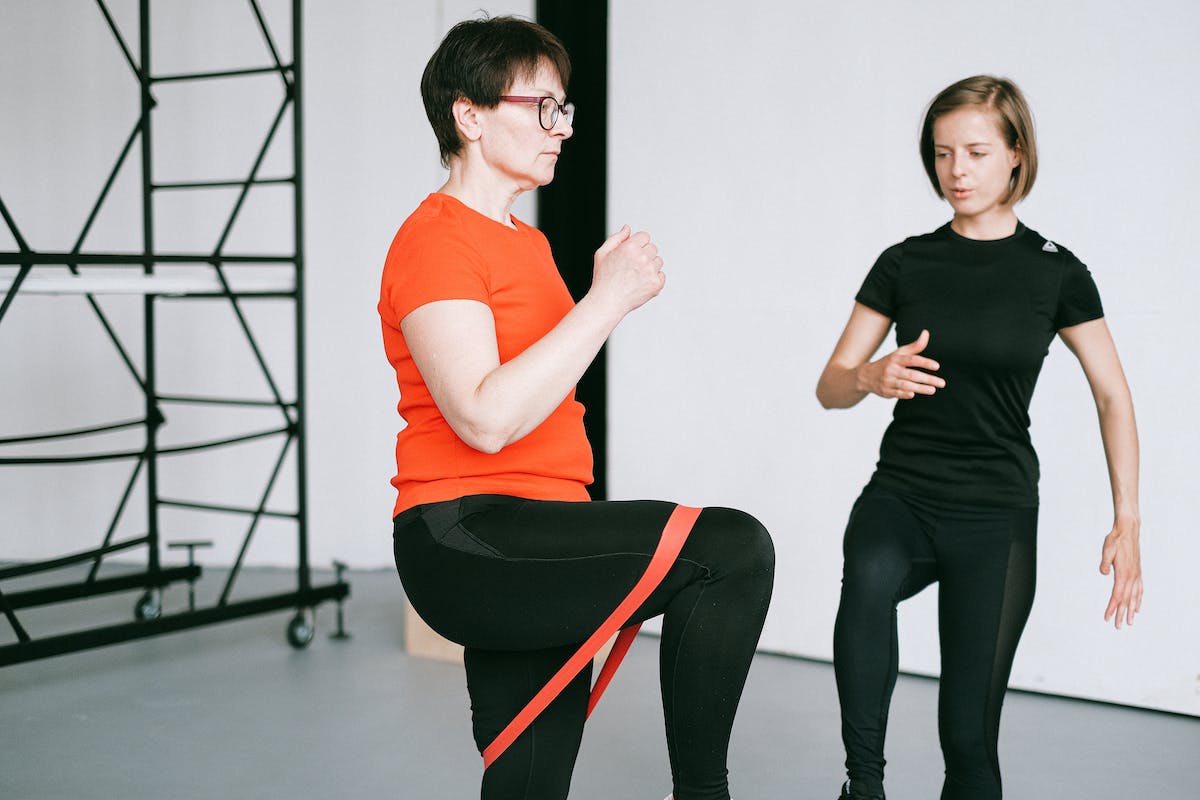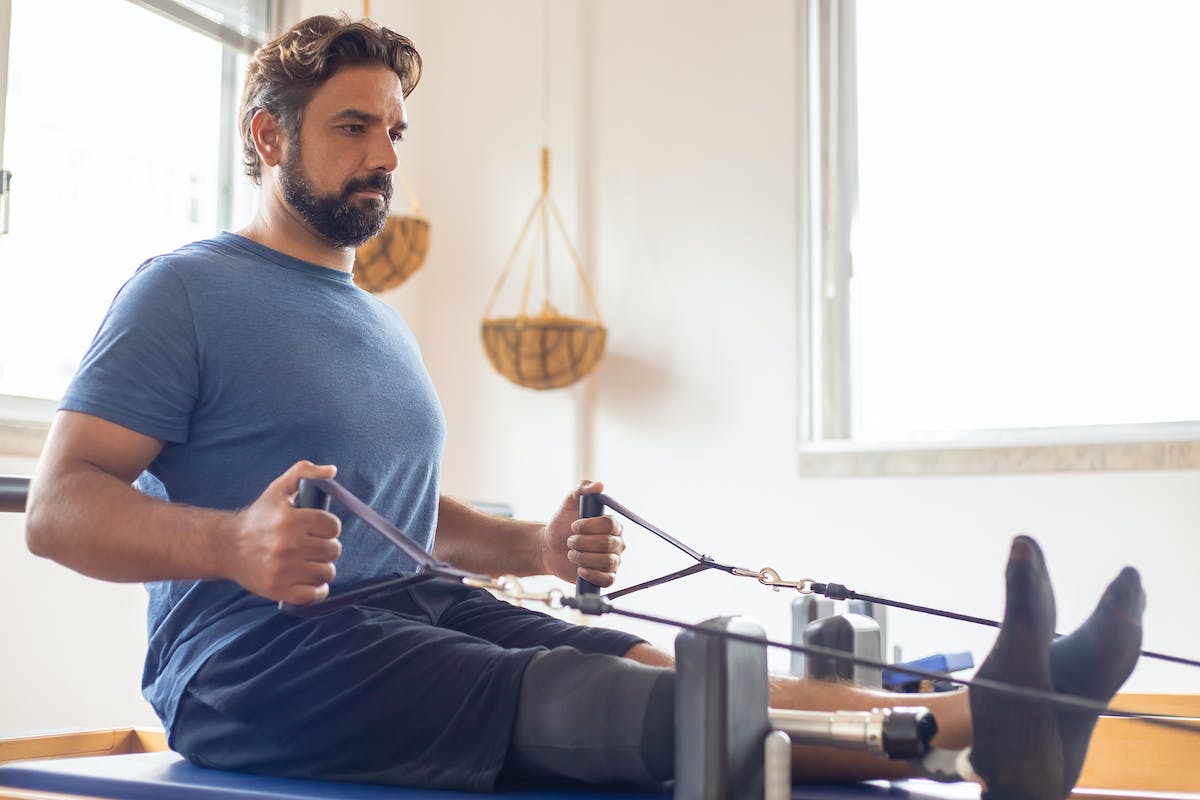Rehabilitation exercises, a crucial component of medical science, are physical activities prescribed by professionals to help patients recover physical abilities post injury or surgery. Ranging from simple stretches to strength-building, these exercises necessitate comprehensive knowledge of human anatomy, specific injuries, and individual patient needs. They offer significant benefits, involve the critical role of physical therapists, and mandate adherence to safety measures. This exploration of rehabilitation exercises presents an enlightening journey into its science, benefits, and the role of therapists.
Understanding Rehabilitation Exercises
Rehabilitation exercises in physical therapy are fundamental for restoring muscle and joint strength, flexibility, and endurance following injury or surgery. These exercises are critical to patient recovery, enabling the return of mobility and functionality.
Apart from exercises, a well-rounded recovery strategy includes rehabilitation diet plans and mental health support. Diet plans, rich in protein, vitamins, and minerals, provide essential nutrients for body healing and muscle tissue rebuilding.
Mental health support is also crucial due to the potential emotional strain of the rehabilitation process. It helps patients maintain a positive mindset, fostering resilience and commitment to the rehabilitation program.
Benefits of Rehabilitation Exercises
Rehabilitation exercises hasten healing, boost recovery speed post-injury or surgery, fortify muscles, enhance flexibility and balance, and avert future injuries. These benefits are key to optimal recovery outcomes.
Enhancing Recovery Speed
Rehabilitation exercises boost recovery speed significantly by integrating two key elements: recovery nutrition and mental resilience. Recovery nutrition, comprising balanced, sufficient nutrients, expedites healing and muscle regeneration, thus shortening recovery time. Mental resilience, nurtured through the regularity of rehabilitation exercises, strengthens the patient’s mental capacity and promotes a positive mindset, essential for a rapid recovery. This dual-action approach of rehabilitation exercises optimizes recovery speed.
Preventing Future Injuries
Rehabilitation exercises speed up recovery and prevent future injuries through muscle strengthening, flexibility enhancement, and proprioception development. These are achieved via personalized exercise programs based on injury diagnostics, which target specific vulnerabilities to reduce re-injury risk. Moreover, rehabilitation nutrition supports injury prevention by promoting tissue repair and reinforcing body strength.
Key benefits include:
- Personalized programs based on injury diagnostics
- Muscle strengthening and flexibility for injury resistance
- Proprioception development for coordination and fall prevention
- Rehabilitation nutrition for tissue repair and body strength support
General Principles of Rehabilitation
In our study of rehabilitation exercises, we focus on the principles of rehabilitation. Starting from basic understanding, we navigate through rehabilitation stages, highlighting patient commitment’s essential role. This dialogue offers a thorough summary of the principles driving successful rehabilitation programs.
Understanding Rehabilitation Basics
Rehabilitation, a process with principles that include diet, mental health, personalization, and progressive loading, is vital for effective treatment. The rehabilitation diet, a tailored nutritional plan, boosts recovery and enhances exercise effectiveness. Mental strain, a significant factor in rehabilitation, requires addressing for successful recovery. Personalized approach, considering unique individual needs and abilities, is crucial in rehabilitation planning. Progressive loading, a gradual increase in exercise intensity, prevents injury and ensures body adaptation.
Stages of Rehabilitation
In rehabilitation, sequential stages ensure optimal recovery and injury prevention. Stage one targets pain control and inflammation limitation. Stage two aims to restore motion range and strength via specific exercises. Stage three introduces functional exercises to assist patients in regaining daily activity capabilities. Rehabilitation diet, crucial in each stage, provides necessary nutrients for tissue repair and energy. Emotional support is vital throughout, addressing psychological challenges during recovery. Understanding these stages enables effective rehabilitation program planning and execution.
Importance of Patient Commitment
Why is patient commitment crucial in rehabilitation? Patient commitment is critical due to its role in motivating the patient to overcome obstacles and achieve successful results. Commitment fuels consistent effort, discipline, and patience, essential for rehabilitation exercises.
Here are four key reasons for the importance of patient commitment:
- Consistent engagement, stemming from commitment, brings steady progress.
- Patient commitment aids in overcoming obstacles, leading to personal growth and resilience.
- High motivation levels, due to commitment, enhance the effectiveness of rehabilitation exercises.
- Commitment promotes adherence to exercise regimens, reducing re-injury risk.
Emphasizing patient commitment can substantially improve the rehabilitation process. The right understanding of this importance can greatly optimize the rehabilitation outcomes.
Stretches for Injury Recovery
Stretching exercises, when integrated into a rehabilitation plan, can expedite injury recovery. They boost flexibility, enhance blood circulation, and lower muscle tension. After diagnosing the injury, a specialized stretching program aligns with the patient’s recovery goals and physical abilities.
Supervision by a qualified physiotherapist or medical professional ensures correct technique and prevents further injury. Stretching can effectively manage pain by loosening tight muscles and easing discomfort.
The injury type determines the beneficial stretches. Static stretches aid muscular injuries, while dynamic ones help with joint-related injuries.
Consistent, regular stretching improves range of motion and strength, accelerating healing.
Strength Building Exercises
Strength building exercises are key in comprehensive rehabilitation. They rebuild muscle, restore power post-injury, regain lost strength, and optimize muscle function. The use of adaptive equipment and exercise modifications ensures safety and effectiveness.
Adapting strength building exercises to individual needs involves using adaptive equipment like resistance bands, free weights, and weight machines for progressive strength building. Exercise modifications match individual strength levels, reducing re-injury risk. Functional exercises improve movement control and muscle coordination by mimicking daily activities. Regular reassessments adjust exercise regimen for continued improvement and plateau avoidance.
The goal of rehabilitation strength exercises is reintegrating the injured individual into regular activities with patience, consistency, and gradual progression focus.
Balance and Coordination Training
Balance and coordination training is a vital part of rehabilitation programs, improving stability and muscle synergy. This training restores smooth, effective coordinated movements, often impaired post-injury or surgery.
Balance equipment, including stability balls, balance boards, and cushions, is commonly used in training. These tools offer a safe, challenging setting for enhancing balance skills. The unstable surfaces stimulate the body’s proprioceptive system, fostering dynamic balance and stability improvements.
Coordination improvement techniques, involving complex movements and multiple muscle groups, are also crucial. Exercises may require simultaneous upper and lower body use or coordinated opposing limb movement. This optimizes energy usage, enhances coordination, and reduces injury risk.
Cardiovascular Exercises for Recovery
Cardiovascular exercises, crucial in rehabilitation, offer distinct recovery benefits. This discussion focuses on cardiovascular rehabilitation advantages and safe exercise inclusion in recovery regimens. Correct cardio routines implementation can boost recuperation, facilitating a safe, effective health return. Each phrase is optimized for NLP and semantic search engines, prioritizing clarity, context, and relevant keywords.
Benefits of Cardio Rehab
Cardio rehab exercises indisputably provide numerous benefits, crucial for patients’ recovery post-cardiac events. These exercises, coupled with adherence to a heart-friendly diet, enhance physical well-being and boost heart health. Furthermore, they have a significant positive impact on mental health, reducing stress and anxiety, thereby improving life quality.
- Cardio rehab exercises enhance heart performance and blood flow.
- They assist in maintaining optimal weight, a key factor in a heart-healthy diet.
- Cardio rehab mitigates future heart problem risks.
- It also promotes mental health, lowering stress and anxiety levels.
Implementing Safe Cardio Routines
Safe cardio routines, correct equipment, and balanced diet expedite post-cardiac event patient recovery. Cardio exercises, executed accurately and at appropriate intensity, aid healing. Selecting optimal cardio equipment is vital. The equipment should match the patient’s physiological state, be user-friendly, and adjustable for increasing intensity levels. Nutritious meals, vital for recovery, provide exercise fuel, aid muscle recovery, and boost immunity. Thus, a cohesive approach of cardio routines, suitable equipment, and balanced diet ensures effective rehabilitation.
Exercises for Lower Body Rehabilitation
Rehabilitating the lower body demands strategically executed exercises, optimal equipment, and efficient pain management. It targets key muscle groups: quadriceps, hamstrings, glutes, and calves.
For quadriceps, incorporate leg extensions, squats, lunges, and resistance bands for added challenge and muscle strength promotion. Strengthen hamstrings with exercises like hamstring curls and bridges. Glute-targeting exercises involve hip thrusts and glute bridges. Simple yet effective calf raises focus on calf muscle strength.
Pain management is vital in this process. Over-the-counter medications, hot and cold therapy, and physical therapy techniques can be used for pain control. The rehabilitation goal is restoring functionality and mobility without causing undue stress or pain.
Upper Body Rehabilitation Exercises
Rehabilitating the upper body necessitates exercises targeting the shoulders, arms, and back. Equipment such as resistance bands, dumbbells, and body bars aids in this process, each offering varying resistance levels for bespoke recovery plans.
Correct posture during rehabilitation exercises is crucial to prevent further injuries and effectively engage targeted muscles. Recommended exercises include seated rows and shoulder blade squeezes, which bolster back muscles and rectify posture.
Restoring arm strength involves exercises like bicep curls, triceps extension, and shoulder press. Begin these with light weights, increasing incrementally as strength and endurance improve.
Role of Physical Therapists in Rehabilitation
Physical therapists are instrumental in rehabilitation. They establish a Therapist Patient Relationship, critical for recovery success. They leverage their knowledge of human anatomy, body mechanics, and healing to create personalized therapy programs. These programs aim to restore function, enhance mobility, and alleviate pain.
Therapy Equipment Usage instruction is a key part of their role. They train patients to use therapy devices safely and effectively, promoting optimal recovery.
In summary, the role of physical therapists in rehabilitation includes:
- Forming a trust-based Therapist Patient Relationship for patient motivation and active participation.
- Designing personalized therapy programs to improve function, mobility, and reduce pain.
- Guiding patients in Therapy Equipment Usage for safe, effective rehabilitation.
- Adjusting therapy programs based on patient progress and feedback.
Physical therapists are crucial for successful rehabilitation, guiding and supporting patients towards strength, mobility, and independence recovery.
Safety Tips During Rehabilitation
Safety during rehabilitation requires adherence to nutrition guidelines, emotional support provision, and prescribed exercise regime compliance. A balanced diet rich in protein, vitamins, and minerals aids in healing, restoring strength and mobility. Emotional support, from professional counseling or family and friends, mitigates potential stress, anxiety, or depression, maintaining patient motivation and mental well-being. Following the prescribed exercise regime prevents possible setbacks or new injuries. Regular check-ups and open communication with healthcare professionals allow progress monitoring and necessary adjustments to the rehabilitation plan.
Success Stories of Rehabilitation Exercises
Rehabilitation exercises have numerous success stories, demonstrating their efficacy in improving health and quality of life.
- A war veteran regained mobility after loss of a leg, through rehabilitation exercises, and completed a marathon.
- A stroke survivor regained movement control through consistent rehabilitation exercises, overcoming initial paralysis.
- A former athlete eliminated chronic back pain using rehabilitation exercises, returning to his sport.
- A teenager with cerebral palsy improved dexterity and autonomy and enhanced psychological well-being through targeted rehabilitation exercises.
These instances show the transformative power of rehabilitation exercises for conditions ranging from physical disabilities to chronic pain, providing inspiration for those beginning a similar journey. Their stories emphasize the psychological benefits of successful rehabilitation, serving as motivational tools for those in early recovery stages.
Frequently Asked Questions
What Is the Average Cost of Rehabilitation Exercises?
The average cost of rehabilitation exercises typically falls between $20 and $150 per session, influenced by factors like insurance coverage and rehabilitation equipment type.
How Long Does It Typically Take to See Results From Rehabilitation Exercises?
Typically, results from rehabilitation exercises are noticeable within 4-6 weeks, but outcomes vary depending on exercise frequency and progress monitoring diligence.
Are There Any Specific Dietary Recommendations to Complement Rehabilitation Exercises?
Hydration is essential for muscle recovery during rehabilitation exercises. Consuming adequate fluids supports healing. Some supplements may also aid recovery. However, personalized dietary advice should be sought from a healthcare professional.
Can Rehabilitation Exercises Be Done at Home or Do They Need to Be Supervised by a Professional?
Rehabilitation exercises can be executed at home with appropriate equipment and knowledge. Initial professional supervision is suggested for safety and correct execution.
Are There Any Specific Mental Health Benefits Associated With Rehabilitation Exercises?
Indeed, rehabilitation exercises offer specific mental health benefits. They foster exercise motivation and emotional resilience, potentially mitigating depression and anxiety symptoms, thus enhancing mood and overall mental well-being.



